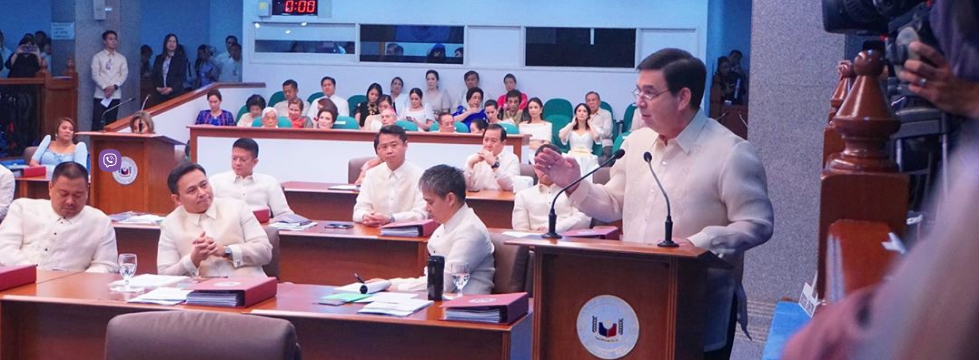First downpayment of P2 T BOL cost must be made in 2019 budget
Like every law, BOL has a cost. Scratch the surface of every provision, and a price tag lies underneath.
Unfortunately, we still do not know the full cost of this measure. What we have are estimates and approximations.
What we were told were the programs and the projects, but not their price. This bill is a ledger of intentions, without tallying the cost of each.
But the BOL is our promissory note to a people. And it is now up to us to redeem every single item promised therein. We must not default.
Whatever the amount, we must fund it. A costly peace is better than a cheap war.
During the debates, I ran numbers on what the BBL will cost. My estimate, up to the last minute of floor discussions, remained unrefuted.
Using the all-in, zero-based budgeting approach, this bill will cost P369 billion in the first three years, P109 billion in the first year, and P1.981 trillion for 10 years.
But let me just point out that in the fiscal universe, the P2 trillion 10-year price tag of the BBL is a meteorite.
It represents a mere 3 percent of the projected cumulative national government budget of P66 trillion from 2019 to 2028.
And these are just the minimum. Not factored in are mandates whose budgets are incalculable at present.
Not included, for example, are social entitlements like the 4Ps, Senior Pension, whose tabs, rightly so, must be picked up by the national government.
Not included is the annual outlay for the maintenance of airports, wharves, roads, bridges and irrigation, which would remain a national government obligation.
Not included are the amounts for innocuously-termed mandates such as “development programs and projects” and “normalization, rehabilitation and development” and “central government assistance” — the nature of which stands unspecified.
There are many similar provisions, which may read harmless, but have concealed peso signs.
But our failure to peg the costs of these programs should not increase the risk of this law becoming an unfunded mandate.
It is up to this government to make the first down payment through the 2019 national budget. The cost of the BOL must be included in next year’s GAA.
The funding lack can be arrived at by using this formula: Add the proposed allocations for ARMM for 2019, the IRA, and funds lodged with national agencies, and deduct these from BOL mandates.
Open government means open budgeting, and open budgeting requires open tabulation of costs. And in this rule, we expect all recipients of taxpayers’ money to comply, without exemption.
Because ultimately it is the taxpayer, from Batanes to General Santos City, who will foot this bill.
RELATED ARTICLES:
-
08 FEB 2018: Recto: Show data to support BBL’s ‘awesome’ fiscal powers
-
19 JAN 2018: Recto to Palace: Need to itemize billions BBL will require
-
18 SEP 2016: Start computing cost of peace, BBL, turning Reds into green army – Recto
-
23 FEB 2015: Recto : BBL has many shades of gray
-
16 FEB 2015: Senate cannot rubber-stamp its OK on BBL’s P75 B price tag
-
22 JUN 2015: To put people first, Recto wants ‘MDG’ – Moro Development Goals – in BBL
-
09 JUN 2015: We want a clear list of Bangsamoro gov’t responsibilities – Recto
-
02 JUN 2015: Taxpayers to shoulder cost of proposed BBL – Recto
-
16 MAR 2014: Bangsamoro’s minimum annual price tag of P50 B a small price to pay for peace– Recto


